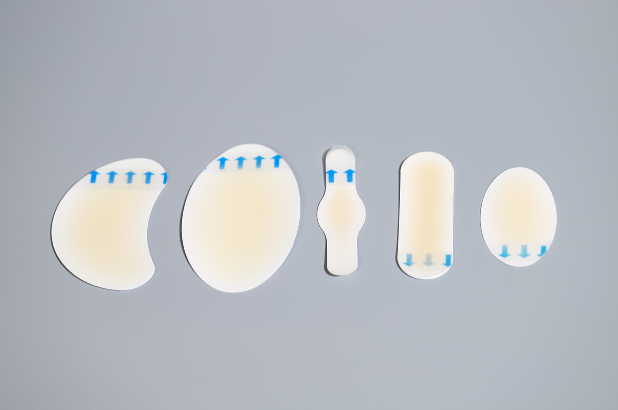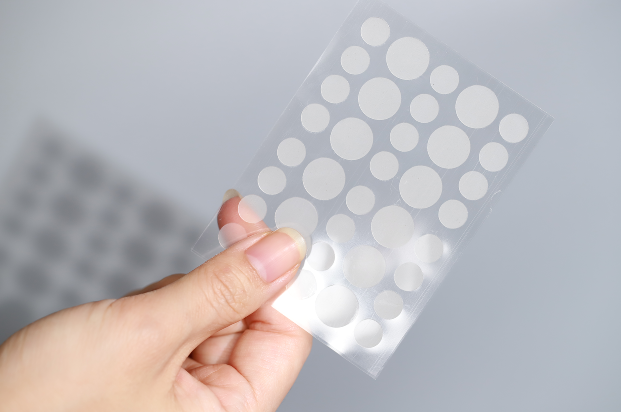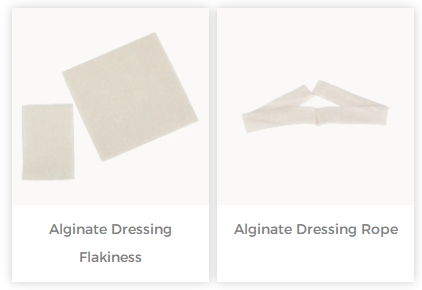In recent years, with the advancement of science and technology, epoch-making changes have taken place in wound dressings, and a variety of new dressings have emerged and are actively used in clinical practice. Since wound healing is a very complex process, it is also affected by many factors. Modern wound dressings are widely used in clinical wound healing and have achieved good therapeutic effects. Its advantages are that it accelerates wound repair, reduces wound infection, improves the cure rate, shortens the course of the disease, relieves the pain of the patient, and accordingly saves the medical expenses of the patient, and at the same time, the new medical dressing is more convenient to use. Here, the editor has sorted out the functions and characteristics of 3 types of commonly used new medical dressings for you:
1. Hydrocolloid dressings:
Hydrocolloid dressings consist of absorbent components such as carboxymethyl cellulose, pectin, gelatin, and a rubber base. It can provide an airtight space for the wound that is slightly acidic and conducive to wound healing. It is also in line with the modern theory of wet wound healing. It can be used in the management of wounds with a small amount of exudate. After absorbing the wound exudate, it becomes a hydrogel, compared Ideal for abrasions, post-operative wounds, smaller and shallower pressure ulcers, burns, and transplant donor sites.

The hydrocolloid dressing can be replaced after several days of use, which reduces the cost, inconvenience, and avoidance of secondary trauma caused by dressing changes. Additionally, hydrocolloid dressings are highly compliant and adhere well to the elbows or high-friction areas such as the sacrum and back heel. It can also be made into hydrocolloid band-aids, hydrocolloid foot stickers, hydrocolloid acne patches, and other products.
2. Foam dressings:
Foam dressings are polyurethane or silicone-based synthetic moisturizing dressings, usually thicker ones, that absorb more wound exudate and provide a buffer against pressure. Foam dressings are generally a two-layer structure with a hydrophilic surface. Due to this hydrophilic structure, foam dressings may be too dry for wounds with little exudate. Clinicians or patients need to soak in normal saline before dressing changes. Reduce pain and secondary trauma.
Foam dressings are suitable for wounds with moderate to high volumes of wound exudate. The foam dressing itself is not adhesive, and a secondary dressing is generally required. If it needs to adhere to the wound, it can also be made into a silicone gel foam dressing, and the silicone gel can prevent skin adhesion and reduce dressing changes. Pain. Foam dressings are also well suited for wounds with high exudate and bony protrusions. It can also be made into various shapes to meet clinical practice needs.
3. New alginate dressings:
Sheet or strip dressings made of alginate fibers. The most clinically representative alginate dressing is a fibrous product derived from brown seaweed, which forms a gel when combined with wound exudate. Upon contact with a moist wound, an ion exchange reaction occurs between the calcium in the alginate and the sodium in the exudate, forming a gel that in turn helps maintain a moist wound environment. Alginate dressings can absorb up to 20 times their own weight in exudate, making them effective for wounds with moderate to heavy exudate. In addition, clinicians or patients should avoid using it on dry wounds or on wounds with minimal exudate, which can be painful for the patient to remove the dressing. Alginate dressings can be used on the affected area for several days, so they do not need to be changed frequently. Another advantage of alginate dressings is that they enhance hemostasis because the release of calcium ions leads to platelet activation.
When the depth of the wound surface exceeds 5mm, alginate dressing should be used to fill the sinus tract of the wound, and then a hydrocolloid dressing should be used to fix it.
For more information on Innomed®wound dressing, refer to the previous articles. If you have customized needs, you are welcome to contact us; we will serve you wholeheartedly.
At Longterm Medical, we transform this data by innovating and developing products that make life easier for those who need loving care.
Editor: kiki Jia
Date: November 9, 2022

 English
English عربى
عربى Español
Español русский
русский 中文简体
中文简体








